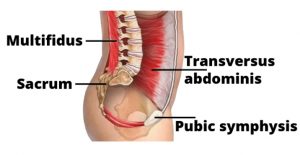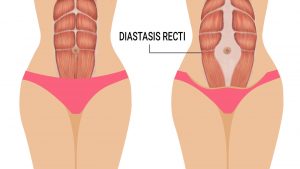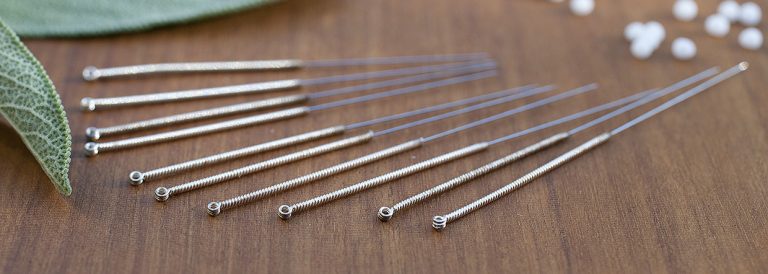One of the strange things about being a physiotherapist is the inability to stop noticing how people move. At the gym, at the grocery store, or walking behind someone on the street, we can’t help but notice the body movements and cringe when we see people using their bodies in ways that potentially can cause injury.
One of the things we see often in patients is an inability to recruit their core muscles properly which is something many of us have never had the opportunity to learn. This, of course, leads to a multitude of problems, from low back injury to pelvic pain to lower extremity dysfunction. Your core is everything! It’s the base from which the rest of your body relies on for stability. So… if your core is not strong, you end up with problems.
The core muscles are not those six-pack abs or the abdominal muscles (rectus abdominus) that run the length of your stomach. In fact, many times we see people with back injuries who have incredibly strong rectus abdominis muscles, do crunches, sit-ups and other abdominal exercises regularly but have poor core and thus injury…. If your abdominal workout consists of exercises that isolate one muscle group (e.g. doing a crunch – which targets rectus abdominus), you aren’t recruiting and strengthening the muscles you need to stabilize your spine when you pick up a box or bend over to tie your shoes.
So what the heck is the core exactly?
Your core is a complex series of deep muscles that are incorporated in almost every movement you make. The three main muscles of the core need to work in harmony with good coordination and timing in order to protect your back and pelvis from injury. It doesn’t really matter if each of these muscles is strong in isolation; the three work together as a team to act as stabilizers. Often, we will see clients who are strong in one of these muscle groups but weak in another. This is problematic because the strong muscle creates too much tension on your spinal structures and the weak ones aren’t much help at all.
So, in order to learn how to recruit these muscles, we must first identify the core and what it looks like. The true core consists of some pretty deep muscles which have some fancy names which are:
- transversus abdominus
- multifidus
- pelvic floor (Puborectalis, Pubococcygeus and Iliococcygeus)
There is also the assistance of many other deeper muscles but these are the three main ones. It’s easier to visualize where these muscles lie if you look at a diagram, so take a look at this one to see where these important structures are located.
Pelvic floor muscles run from the pubic symphysis to the sacrum
Functions of the Core
These core muscles can act in different ways. They can contract isometrically without movement to stabilize your back and pelvis but they can also act as a dynamic stabilizer for movement and transfer force from one extremity to another. The bottom line is that these muscles are the way our bodies stabilize our spine and control forces that could lead to injury.
So, let’s explain this jargon a little more. An example of how your core works isometrically is in an activity we do every day. Walking requires your core to act isometrically to support the movement of your legs and pelvis. It needs to contract to keep your pelvis and lumbar spine stable, even and have an equal amount of force acting upon it.
The pelvic floor muscles which run from your public bone to your tailbone also support your pelvic organs, like your bladder. Weak pelvic muscles can lead to urinary incontinence and who wants that!?
Your core also works dynamically. Let’s use this as an example. Let’s say you are walking down a slippery slope and your foot slips. You need to react and catch yourself to maintain your balance. Guess what muscles need to respond to do this? Yep, those deep core muscles.
It is important to achieve core stability to protect the spine and surrounding musculature from injury in all kinds of movements from running, vacuuming or picking up that jug of milk in the back of the fridge. Learning how to recruit the right core muscles now is the best prevention!







